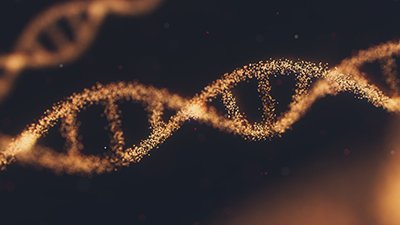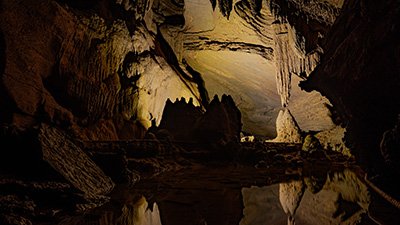
Did Life Evolve Faster Before or After the Extinction of the Dinosaurs?
In a recent news article published in Science Daily, researchers made the claim that evolution of the placental mammals sped up three times faster in the 10 million years following the extinction of the dinosaurs at the end of the Cretaceous geological period. Prior to that event, conventionally dated at 66 million years ago, evolution of Eutherian mammals from which placental mammals supposedly arose was assumed to be constant.
The findings of the research team from the University College of London were that early placental mammals took advantage of the dinosaur’s extinction at the end of the Cretaceous and, without these predatory pressures, rapidly evolved into new forms. Using this new extrapolation, the researchers concluded that the last common ancestor for placental mammals lived at most about 69 million years ago,1 compared to 89 million years, under a slow, constant rate of evolution paradigm, based on Bayesian dating methods.2
What Data Was Found to Support This Hypothesis?
The researchers analyzed fossils from the Cretaceous to the present, and taking the (assumed) dates of their occurrence in the fossil record, they estimated the timing of divergences based on a tree of life, which they had updated in 2015. This new tree of life included Paleocene taxa (conventionally dated at 66–56 MY), which had been mostly or entirely excluded in previous studies.
No definitive crown-placental mammal has yet been found from the Cretaceous.
The scientists measured bones and teeth from the fossils of 904 placental mammals, and then mapped all of the differences between the species on their new tree of life. The number of changes allowed them to reconstruct a presumed evolutionary timeline for these placental mammals after the Cretaceous extinction. Their conclusion was that “no definitive crown-placental mammal has yet been found from the Cretaceous.”3
According to senior author Professor Anjali Goswami:
Our findings refute those of other studies which overlooked the fossils of placental mammals present around the last mass extinction. Using rigorous methods, we’ve successfully tracked the evolution of early placental mammals and reconstructed how it changed over time. While the rate differed between species, we see a clear and massive spike in the rates of evolution straight after the dinosaurs become extinct, suggesting our ancestors greatly benefitted from the demise of the dinosaurs. The huge impact of the dinosaur extinction on the evolution of our ancestors really shows how important this event was in shaping the modern world.
How Can This Be Explained in a Biblical Worldview?
First of all, small changes in the teeth and bones of animals do nothing to support the evolutionary assumption of common descent. Those small changes could just as easily be explained from a creationist view of variations within kinds. Second, and without getting into a lengthy discussion of where the Flood/Post-Flood Boundary is, over which there is some debate,4 suffice it to say that Cretaceous and early Paleogene (Paleocene epoch) fossils would generally be viewed in terms of Flood and early post-Flood organisms respectively.5 This would mean that the placental mammals in the above study are post-Flood mammals, which descended from the kinds that were on the Ark. From a creation perspective, it is not difficult to see how mammalian Ark kinds could have rapidly speciated and radiated out after the Flood. There are new ecological niches to exploit, fewer predators; many of these small to mid-sized mammals have extremely short generation times.
A larger starting population and shorter generational times may have helped these animals form more species more rapidly immediately after the Flood.
Another factor to consider is that many of the Paleocene placental mammals studied here were either rodents, rodent-like shrews, bats or ungulates (animals like deer, antelope, cattle). Most likely many of the kinds in these last two groups would have been animals that would have been taken aboard the Ark in either quantities of seven or seven pairs (the bats as flying creatures, the ungulates as “clean” animals). A larger starting population and shorter generational times may have helped these animals form more species more rapidly immediately after the Flood.
But as successful as these mammals were immediately after the Flood, a large percentage of them disappear from the fossil record fairly quickly, meaning that they went extinct not long after the Flood. Just as today, there were many reasons for animal extinctions: disease, habitat loss, perhaps colder climate with the onset of the post-Flood Ice Age, or even dietary change mandated by lack of the plant species they formerly ate. For some of the carnivorous mammals, maybe a loss of prey species caused them to go extinct not too long after the Flood. Mankind also may have played a role in hunting animals for human or livestock safety, or for food. After the Flood, God told Noah that from then on, the animals would fear man, and that animal flesh could be food for man (Genesis 9:1–7). Dr. Nathaniel Jeanson actually examined the extinction rates of mammals:
Among mammal families, we found that the families alive today represent only approximately 30% of the mammal families that ever existed. Which means that around 70% of mammal families are now extinct.
In other words, 70% of the kinds of mammals that Noah brought on board the Ark died. This is not extinction by virtue of burial in the Flood. Rather, it’s extinction after the Flood.6
Mammal kinds getting off the Ark speciated into many diverse forms. The extinctions of all terrestrial land animals (except those on the Ark) at the time of the Flood may have opened up opportunities for these post-Flood mammals to flourish initially. Again, this is not molecules-to-man evolution, but merely a change within a biblical kind. But we also see multiple extinctions over the course of the post-Flood timeframe, with many occurring before, during, or at the end of the Ice Age.
But Wait—There’s Much Faster Evolution To Consider
A tripled evolutionary pace, as postulated in the University College of London study above, may seem impressive; but that’s nothing compared to how fast evolution allegedly worked billions of years earlier. Science Daily posted a news item on another recent study by researchers at the University of North Carolina, which stated that evolution occurred up to 4,000 times faster on early earth microorganisms from around 4 to 3 billion years ago.7
Under the current secular geological model, the earth formed about 4.56 billion years ago, and was a molten rocky world which slowly cooled; over three hundred million years, briny water exuding up from the mantle began to fill basins. This started the process of the formation of earth’s oceans. Additional theories postulate that some proportion of earth’s ocean water may have been supplied by asteroids,8 meteorites,9 and icy comets.10
Turn Up the Heat and Watch Evolution Go
On this evolutionary early earth, the temperature would have been much hotter, although how hot is a matter of debate;11 many researchers estimate average surface temperature to have been about 100°C (212°F) prior to 4 billion years ago.12 This is 75°C (135°F) hotter than today’s average. Based on this assumption of elevated temperatures on earth, the UNC research team decided to see if this would affect the rate of evolution. They examined a chemical reaction known as cytosine deamination, which occasionally occurs in all cells and is considered one of the most frequent causes of spontaneous DNA mutations. Deamination is the removal of an amine group from a molecule. In this reaction, cytosine (the C in the TAGC DNA-code) mutates into uracil or 5-methylcytosine deaminates to thymine (the T in the TAGC DNA-code).
According to the UNC study, researchers experimentally determined the rates of spontaneous deamination for cytosine and several cytosine-related molecules at different temperatures. Those researchers also measured the rates of cytosine deaminations and spontaneous C-to-T mutations in single-stranded DNA from the HIV virus. The results showed that the rates of cytosine deamination for cytosine molecules, cytosine derivatives and single-stranded DNA rose sharply as the temperature increased.
I thought the ancient rate would be more rapid than the modern rate, but not that rapid.
When paired with the assumption that earth’s surface temperature has itself changed dramatically over the 4 billion year period in which life potentially has existed, they came to a surprising conclusion. Lead Researcher Richard Wolfenden, PhD, commented, “At the higher temperatures that seem to have prevailed during the early phase of life, evolution was shaking the dice frantically.” He further explained that “Cytosine-based mutations, when the temperature was near 100 degrees C, occurred at more than 4,000 times the modern rate. To me, that was surprising. I thought the ancient rate would be more rapid than the modern rate, but not that rapid.”
What is Compelling About A Faster Evolutionary Pace?
Apparently a faster pace for evolution helps to get rid of some troublesome problems for the theory. Quite candidly, the UNC news release of the study admitted,
A much faster pace of evolution means that species could have proliferated much more rapidly than they do now, affording the flora and fauna of earth ample time to acquire their enormous diversity and complexity.
That issue—whether life could have evolved to its present level of complexity within the time available—has lingered ever since Darwin published his theory more than a century and a half ago.13
With a 4.56 billion year earth, oceans potentially forming at 4.3 billion years,14 carbon inclusions in zircon grains (which some deem as signs of organic life) being found (which are conventionally dated to 4.1 billion years),15 some microscopic structures identified as potential cyanobacterial stromatolites at 3.7 billion years,16 and then cyanobacteria at 3.5 billion years,17 these early microscopic fossils occur (in evolutionary terms) in the blink of an eye. Therefore, finding evidence of rapid evolution would seem to alleviate some of these thorny evolutionary issues.
But Is This Really Evidence Of Evolution?
We have stated many times before that mutations are not (as evolutionists claim) the driving force of molecules-to-man evolution. So finding that intense heat increases the rate of C-T mutations does nothing to speed up the pace of evolution. The problem for evolutionists is that the only beneficial mutations ever observed do not add new information to the genome that can cause one kind of animal to evolve into a completely different kind of animal; they merely reshuffle or sometimes delete genetic information. That may lead to a mutant organism that is better adapted to survive in its local environment, but it’s quite the opposite of the changes Darwinian evolution requires. Additionally, if the environment then changes again, these mutant organisms are usually at a survival disadvantage.
So to answer the questions posed by these two new studies—did evolution happen at a faster pace from 4 to 3 billion years ago, and again after the extinction of the dinosaurs 66 million years ago—the answer is no. God created the earth and the universe a little more than 6,000 years ago, and by Day 6 He had made bacteria, dinosaurs, and mankind (and every animal, plant, and fungi). He placed massive variety in the genome of every creature, and He made them perfect and fully formed and functional.
Creationist models . . . predict that from the time these genetically-diverse animals departed the Ark, they would have speciated and adapted rapidly into new environments.
And although most dinosaurs died during the Flood, they did not go extinct then. Two of every kind of unclean air-breathing terrestrial land animal (the category into which dinosaurs would have been counted) would have survived the Flood on the Ark. Creationists also do not disagree with linear, (and in some species-rich kinds, rapid) post-Flood speciation; in fact Creationist models of animal dispersal, geographic isolation, and adaptation predict that from the time these genetically-diverse animals departed the Ark, they would have speciated and adapted rapidly into new environments. Small to mid-sized placental mammal Ark kinds would seem to be prime candidates for being species-rich, having shorter generational times and hence diversifying more rapidly. But again, this speciation is variation within a biblical kind—not pond-scum-to-people evolution.
God also made the seas before He called the dry land forth (Genesis 1:9–10), so the earth was created for and conducive to life right from the beginning, not some Hadean inferno as postulated by uniformitarian geology. He also filled the seas with life on Day Five of Creation Week, and there was no need for “a much faster pace of evolution” to get from cyanobacteria to invertebrates to fish. Genesis 1:20–22 tells us that God created all the different kinds of sea creatures at once, and that the waters teemed with life right away.
Though it seems ironic, biblical creationists are often ridiculed for examining Scripture’s account of the terrestrial, air-breathing animal kinds on the Ark and the dispersal of the animals after they left the Ark, and then hypothesizing how the animal kinds migrated and speciated into the animals we see today. We are labeled as being naïve and accused of accepting “rapid evolution”18 by postulating the many new species that formed in the first few hundred years of the post-Flood period. But this rapid migration and subsequent geographic isolation, which can give rise to rapid speciation, explains how land-bound life has expanded to its current high level of diversity, even after the genetic bottleneck caused by the Flood.
Footnotes
- Thomas John Dixon Halliday, Paul Upchurch, Anjali Goswami, “Eutherians Experienced Elevated Evolutionary Rates in the Immediate Aftermath of the Cretaceous–Palaeogene Mass Extinction,” Proceedings of the Royal Society B 283, no. 1833 (2016): Figure 1, doi:10.1098/rspb.2015.3026.
- Mario dos Reis et al., “Phylogenomic Datasets Provide Both Precision and Accuracy in Estimating the Timescale of Placental Mammal Phylogeny,” Proceedings of the Royal Society B 279, no. 1742 (2012): 3491–3500, doi:10.1098/rspb.2012.0683.
- Thomas J.D. Halliday, Paul Upchurch, and Anjali Goswami, “Resolving the Relationships of Paleocene Placental Mammals,” Biological Reviews (2015): doi:10.1111/brv.12242.
- See the discussion in the following article: Larry Vardiman et al., “Catastrophic Plate Tectonics: A Global Flood Model of Earth History,” Answers in Depth 5 (2010): https://answersingenesis.org/geology/plate-tectonics/catastrophic-plate-tectonics-global-flood-model-of-earth-history/.
- Andrew A. Snelling, Earth’s Catastrophic Past (Dallas, TX: Institute for Creation Research, 2009), 751–761.
- Nathaniel T. Jeanson, “What Happened to the Animals After Noah’s Ark?,” Answers in Genesis, June 11, 2016, https://answersingenesis.org/noahs-ark/what-happened-to-animals-after-noahs-ark/.
- Charles A. Lewis Jr et al., “Cytosine Deamination and the Precipitous Decline of Spontaneous Mutation During Earth’s History,” Proceedings of the National Academy of Sciences 113, no. 29 (2016): 8194-8199, Figure 6, doi:10.1073/pnas.1607580113.
- Brian Greene, “How Did Water Come to Earth?,” Smithsonian, May 2013, http://www.smithsonianmag.com/science-nature/how-did-water-come-to-earth-72037248/?no-ist.
- Astrobio, “Meteorites Most Likely Source of Earth’s Water,” Astrobiology, July 13, 2012, http://www.astrobio.net/topic/solar-system/meteoritescomets-and-asteroids/meteorites-most-likely-source-of-earths-water/.
- But in either the accreted water or extraterrestrial water scenarios, there are problems for the cosmic/geological evolutionary theories. See this blog post for more information: Danny Faulkner, “The Evolving History of the Earth’s Oceans,” Answers in Genesis (blog), March 17, 2015, https://answersingenesis.org/blogs/danny-faulkner/2015/03/17/evolving-history-of-earths-oceans/.
- However, this molten earth hypothesis has recently come under scrutiny from secular geologists. See David Salisbury, “Early Earth Less Hellish Than Previously Thought,” Vanderbilt University, September 15, 2014, http://news.vanderbilt.edu/2014/09/early-earth-less-hellish/.
- University of North Carolina Health Care System, “Evolution May Have Moved at a Furious Pace on a Much Warmer Earth,” ScienceDaily, July 6, 2016, https://www.sciencedaily.com/releases/2016/07/160706115123.htm.
- Mark Derewicz, “Evolution May Have Moved at a Furious Pace on a Much Warmer Earth,” UNC Health Care, July 6, 2016, http://news.unchealthcare.org/news/2016/july/evolution-may-have-moved-at-a-furious-pace-on-a-much-warmer-earth.
- University of California, “Liquid Water at Earth’s Surface 4.3 Billion Years Ago, Scientists Discover,” ScienceDaily, January 11, 2001, https://www.sciencedaily.com/releases/2001/01/010111074038.htm.
- University of California, “Life on Earth Likely Started 4.1 Billion Years Ago, Much Earlier Than Scientists Thought,” ScienceDaily, October 19, 2015, https://www.sciencedaily.com/releases/2015/10/151019154153.htm.
- Allen P. Nutman, Vickie C. Bennett, Clark R. L. Friend, Martin J. Van Kranendonk, and Allan R. Chivas, “Rapid emergence of life shown by discovery of 3,700-million-year-old microbial structures,” Nature (2016): doi:10.1038/nature19355.
- “Cyanobacteria: Fossil Record,” UCMP, http://www.ucmp.berkeley.edu/bacteria/cyanofr.html.
- Joel Duff, “Ken Ham’s Darwinism: On the Origin of Species by Means of Hyper-Evolution Following Noah’s Flood,” Naturalis Historia (blog), December 15, 2015, https://thenaturalhistorian.com/2015/12/15/ken-hams-darwinism-on-the-origin-of-species-by-means-of-hyper-evolution-following-noahs-flood/.

Answers in Genesis is an apologetics ministry, dedicated to helping Christians defend their faith and proclaim the good news of Jesus Christ.
- Customer Service 800.778.3390
- Available Monday–Friday | 9 AM–5 PM ET
- © 2025 Answers in Genesis



